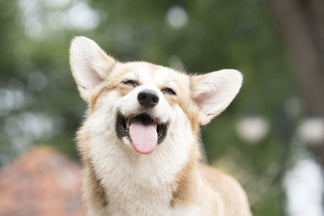This week in our series on Getting to Know Your Dog Breed we are featuring the Belgian Malinois (pronounced mal-in-wah). The Malinois is lower on our AKC most popular list, ranking #47, but they have gained in popularity recently due to their increased use as service dogs, including search and rescue, police work and even as bomb detecting dogs with the military.
Life expectancy: 14 – 16 years
Size: The Malinois is a medium to large dog, weighing around 40-60 lbs for females and 60-80 lbs for males. They stand 22 – 26 inches in height.
Color: The Malinois typically has a fawn to reddish brown coat with black tips. They may also have black markings on the face, head, or feet. Their coat is short. They are frequently mistaken for a German Shepherd, but their conformation is different with the Malinois standing square and fully upright and the GSD having a more sloping back.
Origins: The Malinois is a herding dog from Belgium, the town of Malines, one of four herding dogs originating in Belgium. They were introduced into the United States in early 1900’s.
Personality: The Malinois was bred to be a high energy working dog. They are intelligent, athletic, protective and devoted to their person or family. They have a high prey drive due to their herding background and may chase cats, vehicles or running children if not trained properly. They are extremely easy to train due to their intelligence and desire to please, a light touch is all that’s needed as they are sensitive and do not respond to harsh treatment.
The Malinois can be wary of strangers and socialization becomes essential so that they can meet new people and acquire new interaction skills all of the time. These are beautiful, exciting dogs, but are not meant for everyone. If you want a Malinois as a family pet, you MUST be prepared to meet their exercise and mental stimulation needs, which are high. You should also do further research on the breed to ensure you and your lifestyle can accommodate their needs.
Health Issues: Like any purebred dog, the Malinois can be susceptible to some genetic issues. Health problems that have been seen in the Belgian Malinois include hip and elbow dysplasia, progressive retinal atrophy, cataracts, pannus, and epilepsy. Some Malinois have been known to exhibit a sensitivity to anesthesia.
Fitness/energy level: Malinois are very high energy and not well-suited for a sedentary lifestyle. They crave activity and do best when the have a job, which is why they make excellent rescue dogs, police dogs and herders.
They make great running or biking companions and if you are interested in agility, flyball, dock diving or other canine athletics, you and your Mal could be stars! As mentioned, their energy level is high, and they need several hours per day to keep them in optimal condition mentally as well as physically. They may grow anxious and destructive if not exercised appropriately.
Native foods for the Belgian Malinois:- Rabbit
- Venison
- Trout
- Duck
Good foods to feed your Belgian Malinois:
Zuke's™ Ascent Adventure Tender Blend Trout & Sweet Potato
Acana™ Regionals Grasslands
Grandma Lucy's™ Artisan Venison
Fun facts about the Belgian Malinois:
They have worked with police forces since 1908.
Malinois are used heavily in the military and most of the dogs that work with the elite Navy SEALS are Mals. Cairo, the brave canine that helped SEAL Team 6 take down Osama bin Laden in 2011 was a Malinois.
The TV crime series Person of Interest features a Malinois named Bear. The 2015 feature film Max stars a Malinois, who returns from service with the U.S. Marine Corps.
Sources:
https://www.akc.org/dog-breeds/belgian-malinois/
http://www.vetstreet.com/dogs/belgian-malinois
https://dogtime.com/dog-breeds/belgian-malinois
https://loveandkissespetsitting.net/should-you-get-a-belgain-malinois/




 General
General
 General
General
 General
General
